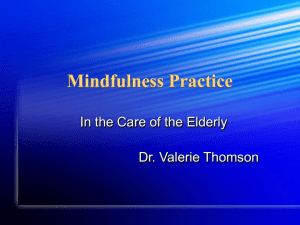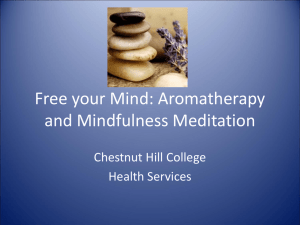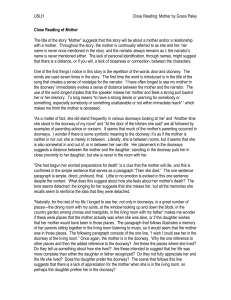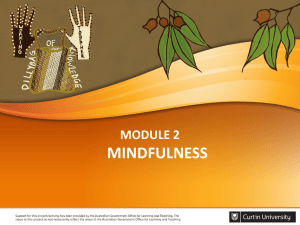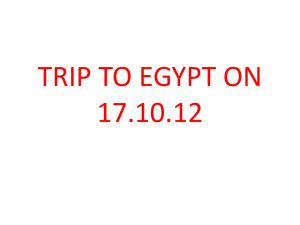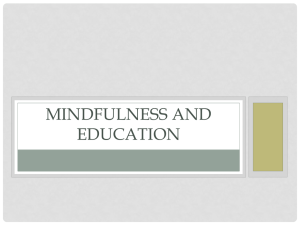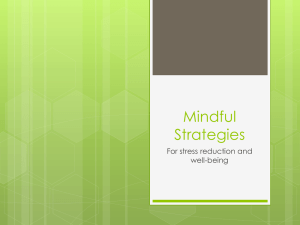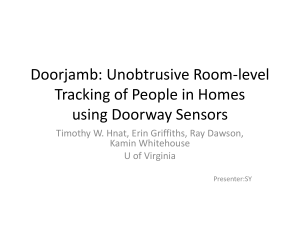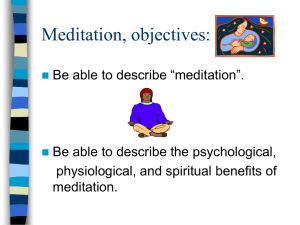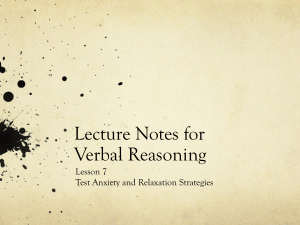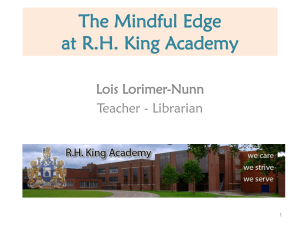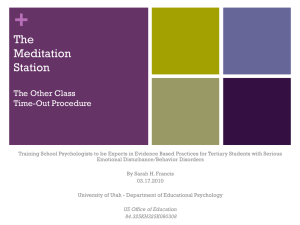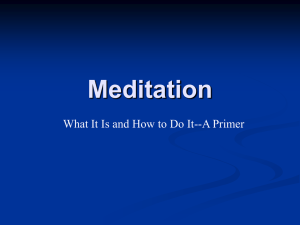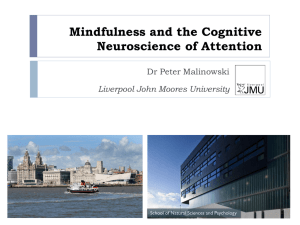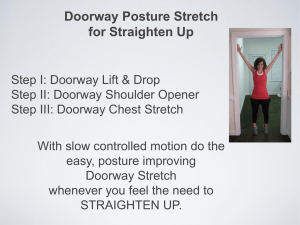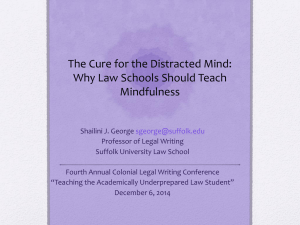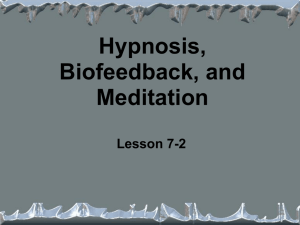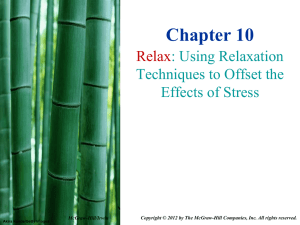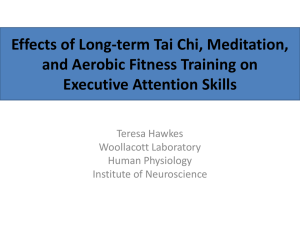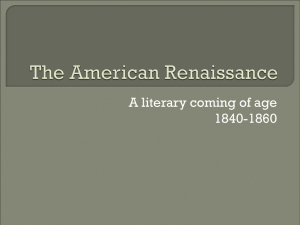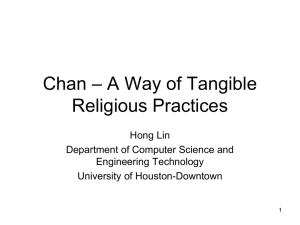Slideshow - Lakeview Health Systems
advertisement
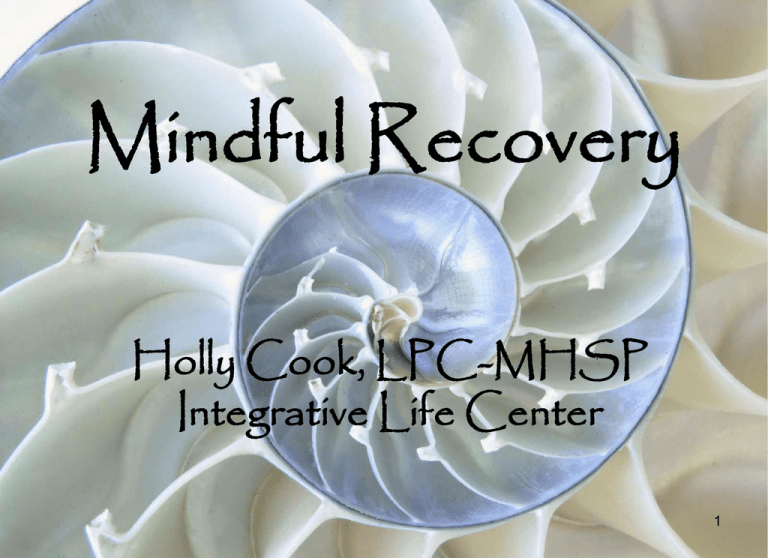
Mindful Recovery Holly Cook, LPC-MHSP Integrative Life Center 1 @ILCnashville 2 Breathing in, I calm my body, Breathing out, I smile. Dwelling in the present moment, I know this is a wonderful moment. -- Thich Nhat Hanh 3 4 AA and Meditation • Step 11: “Sought through prayer and meditation to improve our conscious contact with God as we understood Him, praying only for knowledge of His will for us and the power to carry that out.” – Big Book: p 86 – 87 – Twelve Steps and Twelve Traditions: p 100, 5 What is Mindfulness? “Awareness that emerges through paying attention in a particular way: on purpose, in the present moment, and nonjudgmentally” (Kabat-Zinn, 1994). 6 What is Recovery? • June 10, 1935 - AA was founded • Suffering (hitting bottom) Surrender (ego deflation or admitting powerlessness) Spiritual Experience Daily Practice of Spiritual Principles Helping Others • A return to a normal state of health, mind, or strength. (Webster’s Dictionary) • A process of change through which individuals improve their health and wellness, live a selfdirected life, and strive to reach their full potential. (SAMHSA) Mindfulness and Recovery Paying attention… Greater awareness of triggers and responses, interrupting previously automatic behavior (Bresslin, et al., 2002) In the present moment… Accepting present experience rather than using substances to avoid it. Nonjudgmentally… Detach from attributions and “automatic” thoughts that often lead to relapse. 8 Your Brain on Meditation 9 Photo of brain comparison from: AndyNewberg.com Your Brain on Meditation 10 Brain Wave States BETA – the state when we are fully awake, conscious, interacting with our environment, and going about our normal day to day activities. ALPHA – the state we are in when we close our eyes, turn inwards and relax. THETA – the state for optimal meditation. We are in our subconscious mind, a dreamy state. The body is asleep but the mind is lucid and awake. DELTA – the state of deep restorative sleep. 11 12 13 All you really need to do is accept this moment fully. You are then at ease in the here and now and at ease with yourself. -- Eckhart Tolle The Power of Now 14 Formal Practices Walking Meditation Sitting Meditation Body Scan Mindful Movement “Lovingkindness” or “Metta” Mountain Meditation 15 Body Scan Meditation 16 “Informal” Practices Riding this wave, rather than succumbing to the urge and being wiped out by it. Trusting that without any action on your part, all the waves of desire, like waves on the ocean, arise and eventually fade. Urge Surfing Staying with the urge as it grows in intensity, riding it to it’s peak, using the breath to stay steady as it rises and crests, knowing it will subside. Mindfulness of daily activities Create “SOBER” breathing space 17 “SOBER” Breathing Space Stop Observe Breathe Expand Respond 18 Inquiry Mind’s Process Inquiry What was the initial direct experience? Direct Experience (pain) Reaction (judgment, story) suffering Reaction Reaction How did the mind and body react to that? Is this process familiar? Is it related to craving, relapses, recovery, daily life experiences? Not Personal: This is what minds do. No need for judgment. 19 Adapted from Segal et al., 2002 Putting it all Together 20 Mindful Recovery Thomas and Beverly Bien • The Ten Doorways to Mindful Recovery – Doorway One: Return to the present moment – Doorway Two: Consider your life as a story you are still writing – Doorway Three: Use journaling to deepen awareness of your life story and open the door to spiritual awakening – Doorway Four: Practice meditation to become more accepting of yourself and your life 21 Mindful Recovery (cont) – Doorway Five: Find ways to connect with the natural world – Doorway Six: Cultivate healthy relationships to discourage addiction – Doorway Seven: Explore dreams to expand your view of who you are beyond the limited point of view of your conscious, rational self – Doorway Eight: Practice mindfulness at work – Doorway Nine: Learn to hold and embrace difficult emotions to ensure successful recovery 22 – Doorway Ten: Practice, practice, practice Some basic observations which underlie most of the mindfulness approaches: 1. There is a difference between actual pain (emotional and physical) and the suffering that we create in our minds. 2. The suffering is not only optional, but there are many ways to remove it, as it is unnecessary, and a tremendous waste of time, energy and enjoyment of life. 23 3. The way out of this self-created cell of suffering is accepting absolutely everything about ourselves and our lives, by embracing with wakefulness and care our moment-to-moment experience. This does not mean putting up with a truly harmful circumstance with ourselves or others. 4. “It is remarkable how liberating it feels to be able to see that your thoughts are just thoughts and that they are not ‘you’ or ‘reality.’ . . . . the simple act of recognizing your thoughts as thoughts can free you from the distorted reality they often create and allow for more clear-sightedness and a greater sense of manageability in your life” --Kabat-Zinn. 24 25

